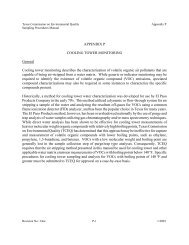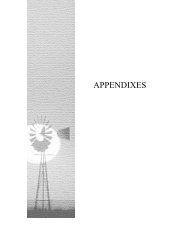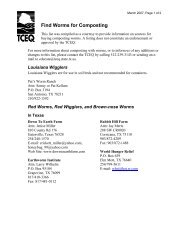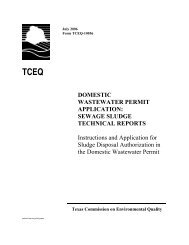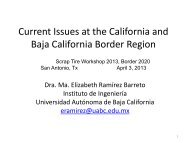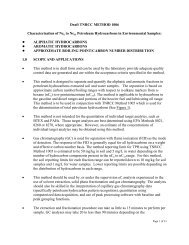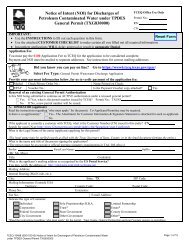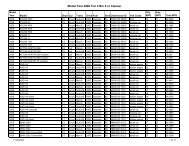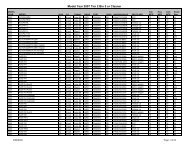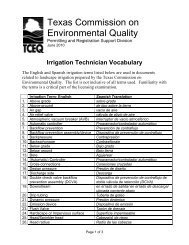Ecological Overlay for the Trinity River for support of Development of ...
Ecological Overlay for the Trinity River for support of Development of ...
Ecological Overlay for the Trinity River for support of Development of ...
Create successful ePaper yourself
Turn your PDF publications into a flip-book with our unique Google optimized e-Paper software.
STEP 3. Obtain and evaluate geographically-oriented biological data in <strong>support</strong> <strong>of</strong> a flow regime<br />
analysis.<br />
STEP 4. Parameterize <strong>the</strong> flow regime analysis using ecological and biological data<br />
STEP 5. Evaluate and refine <strong>the</strong> initial flow matrix<br />
Our study and report provides in<strong>for</strong>mation needed to immediately complete steps 2 and 3.<br />
Fur<strong>the</strong>rmore <strong>the</strong> in<strong>for</strong>mation provided in this report can be used to assist <strong>the</strong> BBEST complete<br />
<strong>the</strong> remaining steps.<br />
The SAC draft guidance also provided o<strong>the</strong>r general recommendations on use <strong>of</strong> biological data.<br />
They are paraphrased and listed below.<br />
1. Quantification <strong>of</strong> biology based flow parameters<br />
The BBEST should examine sources from <strong>the</strong> literature review, assess <strong>the</strong>m <strong>for</strong> relevance and<br />
identify any statements, data, or graphs that specifically link aspects <strong>of</strong> <strong>the</strong> flow regime with<br />
biota or key ecological processes. It is important to document key habitat requirements and<br />
preferences <strong>of</strong> target biological species and assemblages.<br />
2. Causal connections based on available data and known relationships<br />
It is recommended that <strong>the</strong> BBEST portray <strong>the</strong> flow-ecology relationships and ecological<br />
processes in a conceptual model. Conceptual models provide a concise way to portray<br />
ecological knowledge and show hypo<strong>the</strong>sized linkages between flow and various aspects <strong>of</strong><br />
ecosystem health, or a species’ dependence upon certain flow conditions to complete a particular<br />
life history stage.<br />
3. If <strong>the</strong>re is existing data that links aspects <strong>of</strong> <strong>the</strong> flow regime with biological in<strong>for</strong>mation,<br />
this in<strong>for</strong>mation should be used to parameterize <strong>the</strong> flow regime analysis, e.g. HEFR<br />
Based on <strong>the</strong> quantification <strong>of</strong> flow parameters, development <strong>of</strong> causal connections and<br />
geospatial in<strong>for</strong>mation, in<strong>for</strong>mation may be available that specifically links biological<br />
in<strong>for</strong>mation to aspects <strong>of</strong> <strong>the</strong> flow regime. Even if specific biological in<strong>for</strong>mation is not<br />
available to in<strong>for</strong>m all decision points in <strong>the</strong> hydrographic separation, any available in<strong>for</strong>mation<br />
should be used.<br />
4. Subsistence flows should maintain water quality and key habitat considerations<br />
Subsistence flows need to be sufficient to <strong>support</strong> key habitats and habitat needs <strong>for</strong> focal<br />
species, populations, or guilds <strong>of</strong> representative flowing-water organisms and adjustments should<br />
be made to minimize or avoid loss <strong>of</strong> key habitats and needs, to <strong>the</strong> extent possible. Flows should<br />
be evaluated and adjusted to ensure water quality parameters (e.g. DO and temperature) are<br />
maintained in a suitable range to ensure aquatic life persists/endures.<br />
17<br />
Environmental Institute <strong>of</strong> Houston<br />
November 17, 2009<br />
<strong>Trinity</strong> <strong>River</strong> Basin<br />
Biological <strong>Overlay</strong>




